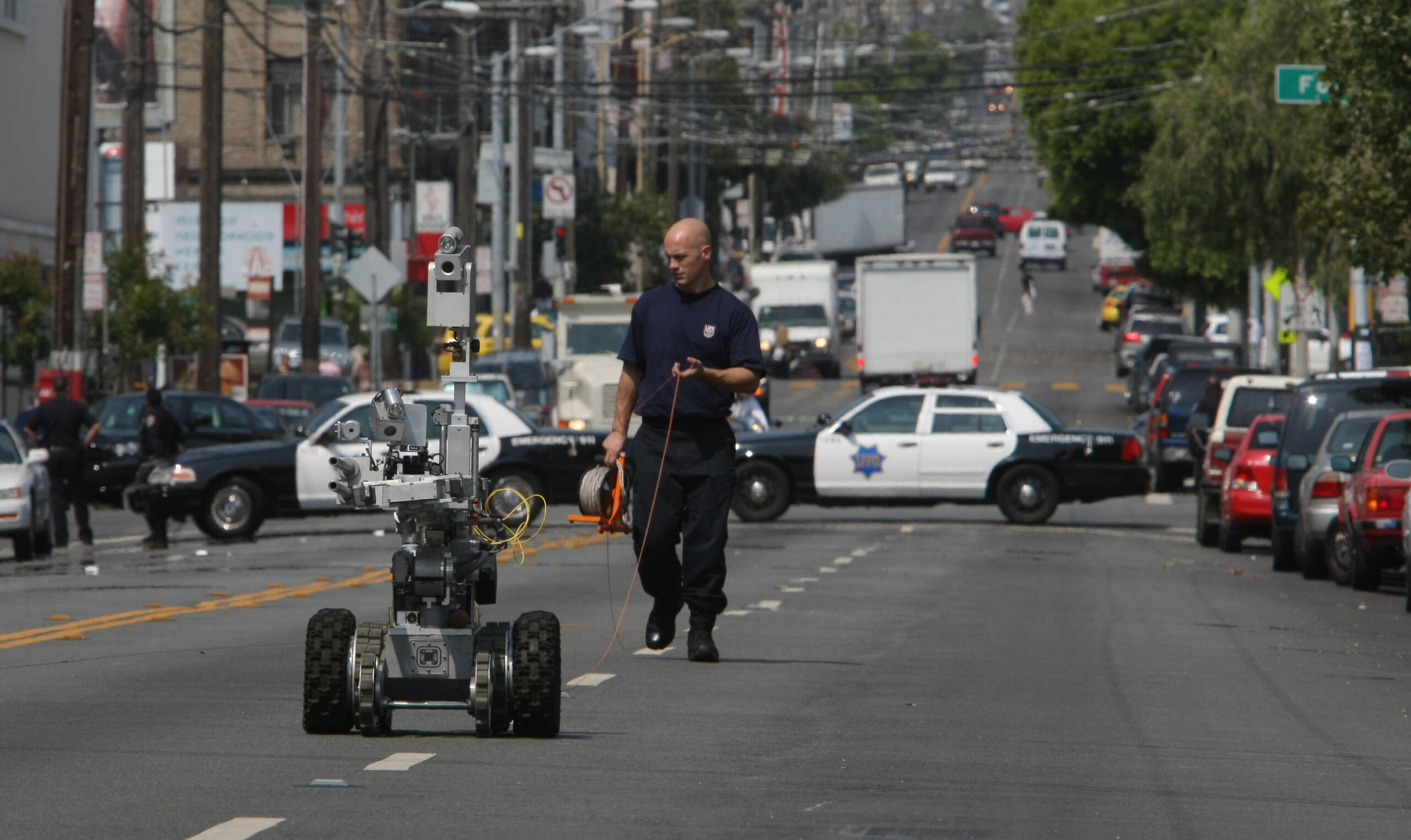In an idea that might seem pulled straight from a dystopian sci-fi movie, San Francisco police want city leaders to let them use a small cache of military-style robots to kill people.
The pitch SFPD will make to the Board of Supervisors Tuesday could conjure images of autonomous robots gone rogue. But proponents point out that police would control the machines and would only allow them to seriously injure or kill as a last resort in the face of an immediate, deadly threat. The idea would be for police to use them to thwart—or mitigate—a mass casualty event.
The proposal would apply to 17 robots SFPD already shored up over the past decade or so. The robots are remotely piloted vehicles designed to neutralize bombs or enter spaces too precarious or dangerous for officers.
SFPD has never before deployed the robots to “deliver any lethal force,” a police spokesperson said. The proposal would also mark SFPD’s first policy on whether officers can use their mechanical cohorts to hurt people.
Yet a deadly robot would not be unprecedented for American police.
In 2016, Dallas cops said they had no choice but to send a robot with a pound of explosives that detonated in a blast that killed a gunman who fatally shot five police officers. SFPD owns similar robots.
SFPD drafted its policy to comply with a California law, Assembly Bill 481, that requires law enforcement agencies to disclose all military equipment in their arsenals and come up with rules about how to use it. The policy is one of many that police will ask the Board of Supervisors to approve Tuesday.
Supervisor Rafael Mandelman, who supports letting police robots use deadly force, said he understood why it might make some people think RoboCop. But he called that reaction “profoundly misguided.”
“The notion that we would decide not to use a technology that in extraordinary, exigent circumstances could avoid the loss of significant life, because people don’t like robots, strikes me as bizarre and wrongheaded,” he said.
The idea to authorize deadly force for robots came out of back-and-forth discussions between SFPD and Supervisor Aaron Peskin, who chairs the Rules Committee. Mayor London Breed sponsored the proposal, which was first reported by Mission Local.
Peskin said the spirit of proposal is for police to only make robots resort to deadly force “with the utmost judiciousness in crazy, mass life-threatening situations.”
“This was not in any way intended to be a commonly used policy,” Peskin said. He also noted the lack of a current robot use-of-force policy.
“If it weren’t for this state law, we would never be having this conversation, and they could do whatever they wanted,” Peskin said.
Still, the prospect of deadly robots floored critics.
Yoel Haile, a director with the ACLU of Northern California, called it a “terrible idea” and an extreme ask encouraged by a Board of Supervisors that recently gave police permission to tap into live surveillance cameras.
“We can’t believe we have to say this,” Haile said in a prepared statement. “No, police departments should not have killer robots.”
Haile argued that the robots won’t make San Francisco any safer and might actually “make it easier for officers to mistakenly pull the trigger and impede people’s ability to seek justice when wrongful killings occur.”
Supervisor Dean Preston said the proposal represents how far the pendulum has swung from the national movement to reform—and defund—policing spurred by the Minneapolis police killing of George Floyd.
“I just am still scratching my head that this is seriously being proposed,” Preston said.
He later added, “If it weren’t so deadly, I would say it’s almost laughable.”
Board of Supervisors President Shamann Walton seemed equally stunned.
“I can’t even fathom a robot operating in that capacity,” he said. “I’m still in shock by the proposal.”
What’s more, he added, the robots could portend the “possible loss of jobs for what I represent, human beings.”
